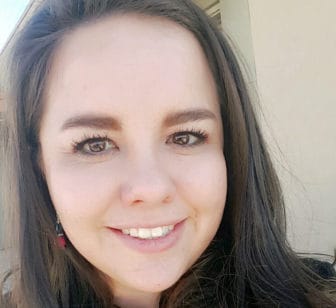COMMENTARY: Voting creates opportunity — the opportunity to have your voice heard and carry weight. It would create better transparency and accountability within our government. Democratic involvement is the greatest act of patriotism.

Courtesy photo
Ashley Beyer
Our nation is once again at a point of extreme dissatisfaction with many of this nation’s laws and lawmakers. People want change and progress. There are riots and protests for change, yet voter turnout is still too low.
Is it safe to say there is a correlation between voter turnout and equivocal change? I think so. Consolidating local elections may not fix all of the issues that cause low voter turnout, but it’s a great start. We cannot afford to miss this important first step to increase democratic involvement.
When I think about the future of American democracy, I have an idealistic picture in my head. It is one where our children grow up and progress through their education knowing the importance of voting. They would know the importance of civic engagement. They would know that any level of involvement matters — from simply casting a vote, to communicating with representatives, or even involvement in grassroots efforts.
Involvement can lead to change and progress that accurately reflects the people. There is a need to promote and understand the importance of local government. It affects taxes, roads, parks, schools, public safety, emergency services, and many other things that directly impact everyday life. I want my children and my grandchildren to just know these things in the same manner that they will know simple math and grammar.
The reality of American democracy is a very different picture. Voter turnout is dismally low, especially for local elections. Doña Ana County, where I live, is no exception. According to the Doña Ana County Clerk’s Office, there have been 16 elections in the past two years, all at different times. Out of those, nine had voter turnout of 1-4 percent of eligible voters. Six elections saw voter turnout between 15 percent and 23 percent.
These low numbers have created a disproportionate voter profile. The voter profile is comprised of the views and votes of only a handful of active voters. There needs to be a collective voter profile that is comprised of the majority of eligible voters. Only then will our democratically elected officials properly represent the needs and interests of the true majority.
The 2016 General Election saw 62 percent of registered eligible voters turnout to vote. While that is a great number, it still leaves much to be desired. There are multiple reasons why voter turnout was higher for the 2016 General Election. First, people know to expect a General Election every two years in November. Another reason, information was widely distributed by the numerous candidates and government agencies. These two simple things combined generate more interest from the public than most local elections.
How do we fix this problem? The first step is to consolidate local elections. This will address many of the hurdles that are created as a result of the numerous elections and election codes that are currently in use. Having so many different election codes creates confusion among voters. It also creates difficulties in dispersing mass information regarding elections.
In consolidating elections, information regarding upcoming elections would be more widely available. It would also create one unified election code. Voter turnout would increase because people turn out to vote, in higher numbers, for bigger elections. There are so many elections in the span of two years that the professionals struggle to keep informed. How can we expect the public to also keep up?
There is opposition that cites worries that largely discredit the ability of the voter while at the same time trying to shape the outcome of their elections. One expressed concern of the opposition is that the ballots would be too long — and that would intimidate the voter. Another concern that has been repeatedly expressed is the worry that people would vote for offices and questions they may not be properly informed about.
Both of these concerns insinuate that not all voters are capable of making their own decisions. Even if a voter is not informed on a specific issue or office, seeing it on the ballot will likely spark a curiosity — and, as a result, planting that seed of democracy.
Ashley Beyer graduated from New Mexico State University with a bachelor of arts in government. She currently works at the Doña Ana County Bureau of Elections.